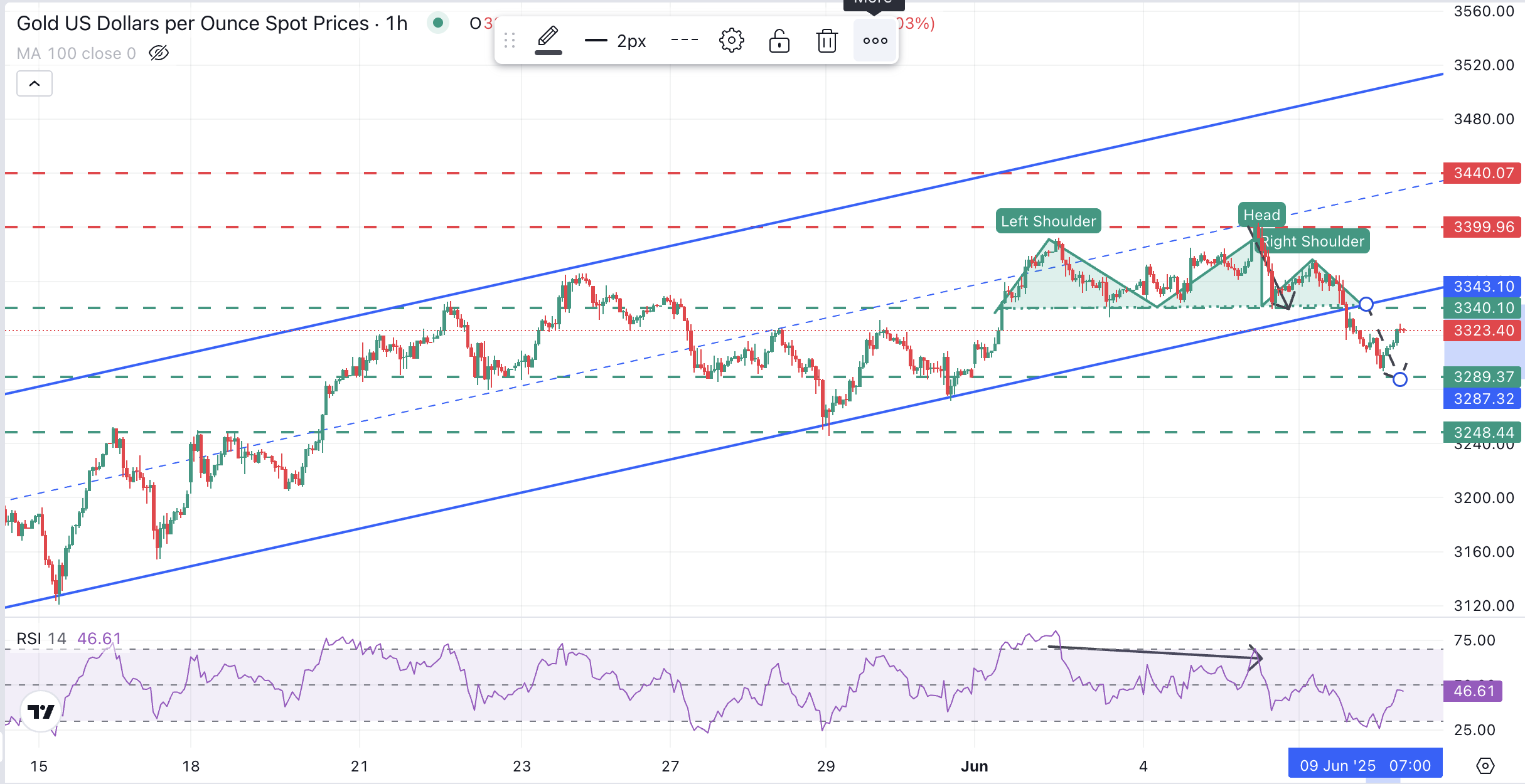Gold Price Forecast: XAU/USD bounces up toward $3,340-$3,350 as the US Dollar softens
- The US Dollar trims gains as the market braces for the US-China trade talks.
- A more cautious market mood is supporting the safe-haven Gold's recovery.
- XAU/USD is on a bearish correction with $3,340-$3,350 likely to hold bulls.
Gold (XAU/USD) is showing moderate gains on Monday, trimming losses following a nearly 2% sell-off during the last two trading days. The pair is on a bearish correction, but a weaker US Dollar ahead of the US-China trade meeting has provided the support for today’s Gold recovery.
Investors are trimming their US Dollar longs, increasingly cautious about the outcome of the negotiations between the world’s two major economies, amid the lack of progress on trade deals. So far, only the UK has reached a rather modest one, while the clock ticks closer to the July 9 deadline.
Technical analysis: XAU/USD is in a bearish correction
The technical picture shows signals pointing to the end of the uptrend from mid-May lows. The daily chart shows a bearish engulfing candle on Thursday, followed by another negative candle on Friday that broke the bottom of the ascending channel.
Price action has reached the target of a small bearish H&S figure, at the $3,290 area and is bouncing higher. A retest of the confluence of previous support $3,340 and the reverse trendline is looking likely. A rejection here would confirm the bearish bias.
Supports are at the mentioned $3,290 and the May 15 and 19 highs, and May 29 lows at $3,245.
On the upside, a confirmation above $3,450, cancels the bearish bias and brings $3,400 back into play.

Gold FAQs
Gold has played a key role in human’s history as it has been widely used as a store of value and medium of exchange. Currently, apart from its shine and usage for jewelry, the precious metal is widely seen as a safe-haven asset, meaning that it is considered a good investment during turbulent times. Gold is also widely seen as a hedge against inflation and against depreciating currencies as it doesn’t rely on any specific issuer or government.
Central banks are the biggest Gold holders. In their aim to support their currencies in turbulent times, central banks tend to diversify their reserves and buy Gold to improve the perceived strength of the economy and the currency. High Gold reserves can be a source of trust for a country’s solvency. Central banks added 1,136 tonnes of Gold worth around $70 billion to their reserves in 2022, according to data from the World Gold Council. This is the highest yearly purchase since records began. Central banks from emerging economies such as China, India and Turkey are quickly increasing their Gold reserves.
Gold has an inverse correlation with the US Dollar and US Treasuries, which are both major reserve and safe-haven assets. When the Dollar depreciates, Gold tends to rise, enabling investors and central banks to diversify their assets in turbulent times. Gold is also inversely correlated with risk assets. A rally in the stock market tends to weaken Gold price, while sell-offs in riskier markets tend to favor the precious metal.
The price can move due to a wide range of factors. Geopolitical instability or fears of a deep recession can quickly make Gold price escalate due to its safe-haven status. As a yield-less asset, Gold tends to rise with lower interest rates, while higher cost of money usually weighs down on the yellow metal. Still, most moves depend on how the US Dollar (USD) behaves as the asset is priced in dollars (XAU/USD). A strong Dollar tends to keep the price of Gold controlled, whereas a weaker Dollar is likely to push Gold prices up.

